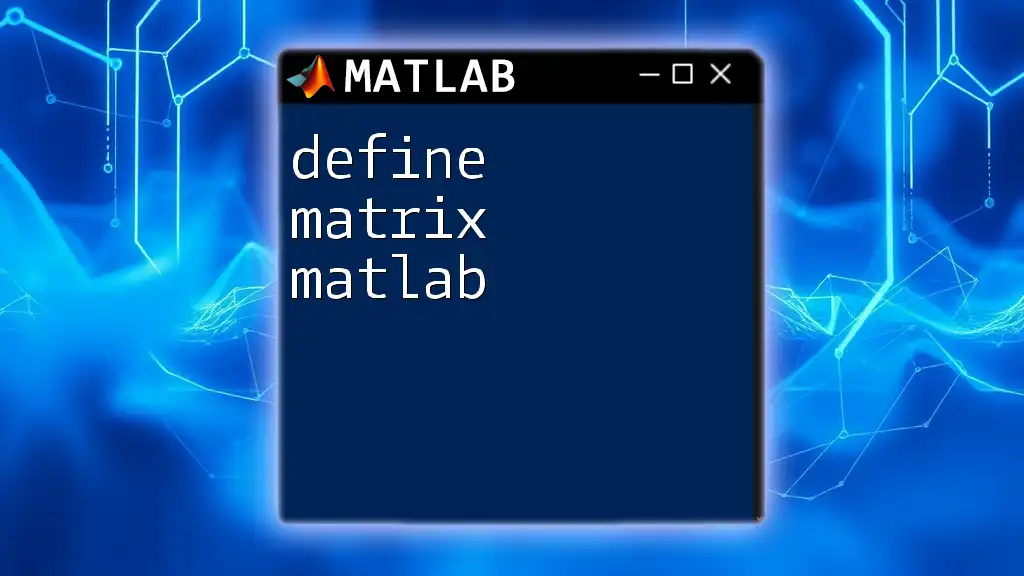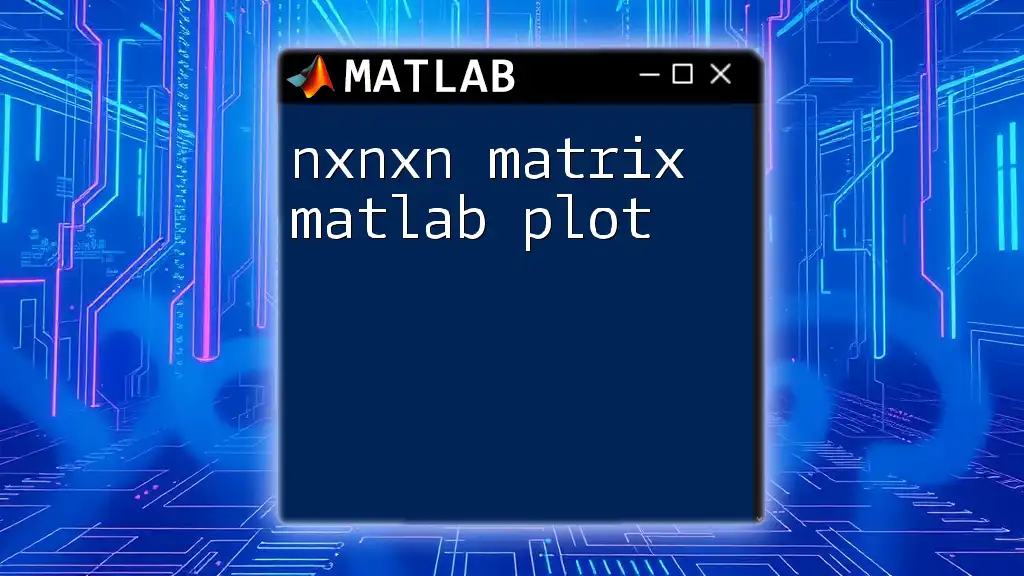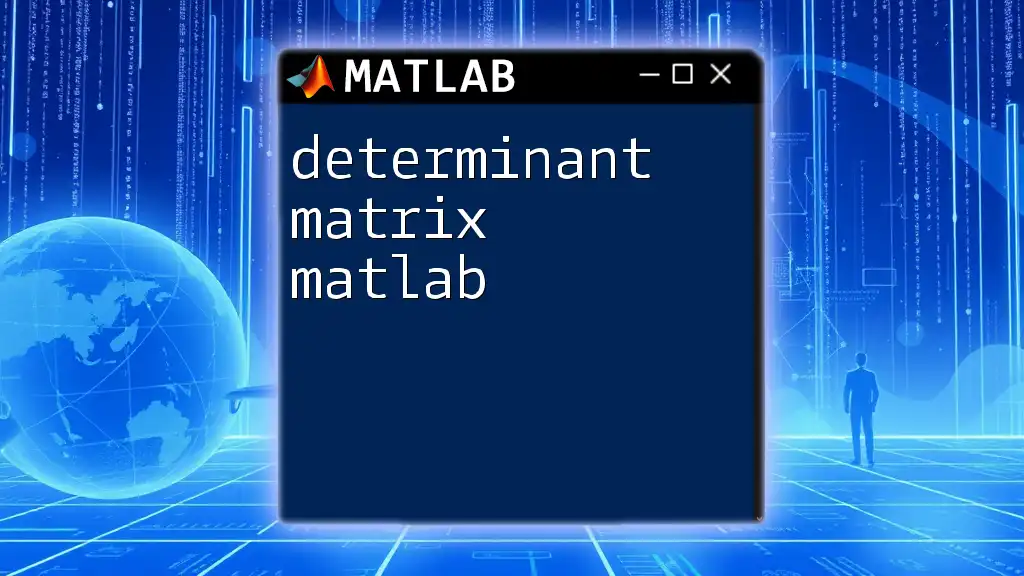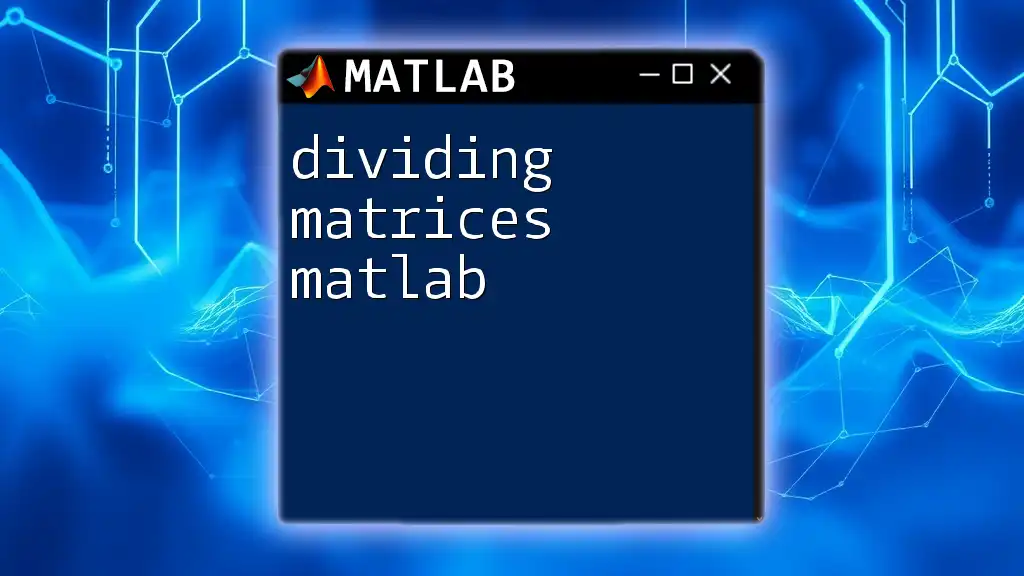In MATLAB, a matrix can be defined by enclosing the elements in square brackets, separating the rows with semicolons and the columns with spaces or commas.
A = [1, 2, 3; 4, 5, 6; 7, 8, 9];
What is a Matrix?
A matrix is a two-dimensional array of numbers arranged in rows and columns. Each element in a matrix can be accessed with specific row and column indices. Understanding the structure of a matrix is fundamental because it lays the groundwork for nearly all mathematical computations in MATLAB.
Types of Matrices
-
Row Matrix: A matrix that has only one row is called a row matrix. For example:
rowMatrix = [1, 2, 3, 4]; -
Column Matrix: Conversely, a column matrix consists of a single column. For instance:
columnMatrix = [1; 2; 3; 4]; -
Square Matrix: This is a matrix where the number of rows is equal to the number of columns. A square matrix has special properties, such as determinants and eigenvalues. An example of a square matrix is:
squareMatrix = [1, 2; 3, 4]; -
Zero Matrix: A matrix where all elements are zero. It's often used in various algorithms. Example:
zeroMatrix = zeros(3); % Creates a 3x3 matrix filled with zeros -
Identity Matrix: A special square matrix with ones on the diagonal and zeros elsewhere. It serves as the multiplicative identity in matrix operations. Example:
identityMatrix = eye(3); % Creates a 3x3 identity matrix
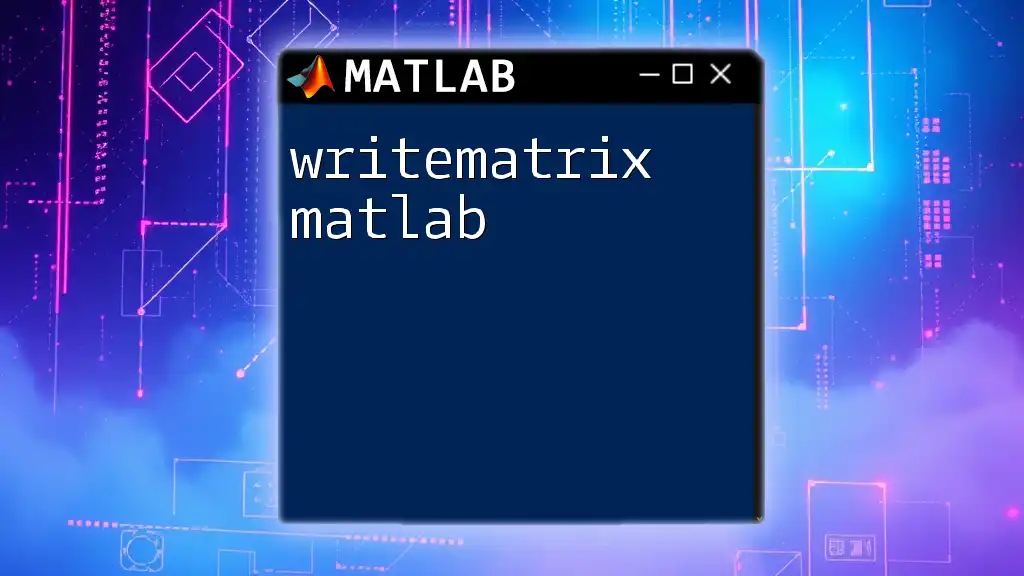
Creating Matrices in MATLAB
MATLAB provides several effective methods for creating matrices that cater to different needs.
Using the `[]` Operator
The most straightforward method to create a matrix is to utilize square brackets. A semicolon signals the end of a row, while spaces or commas separate elements within the same row. Here’s how to define a simple 3x3 matrix:
A = [1 2 3; 4 5 6; 7 8 9];
This code initializes a matrix A with three rows and three columns, with elements filling the rows from left to right.
Using MATLAB Functions
MATLAB has built-in functions that simplify matrix creation.
-
`zeros()`: Generates matrices filled with zeros. For instance:
Z = zeros(3); % 3x3 zero matrix -
`ones()`: Creates matrices with all elements equal to one. Example:
O = ones(2,4); % 2x4 ones matrix -
`eye()`: Creates an identity matrix where the diagonal elements are ones, and all other elements are zeros. Example:
I = eye(4); % 4x4 identity matrix
Creating Matrices with Random Values
You can also create matrices populated with random numbers for simulations and algorithms.
-
`rand()`: Generates matrices with uniformly distributed random numbers between 0 and 1. For instance:
R = rand(3); % Creates a 3x3 matrix of random values -
`randi()`: Generates matrices of random integers within a specified range. Here’s an example:
RInt = randi(10, 2, 3); % Creates a 2x3 matrix of random integers between 1 and 10
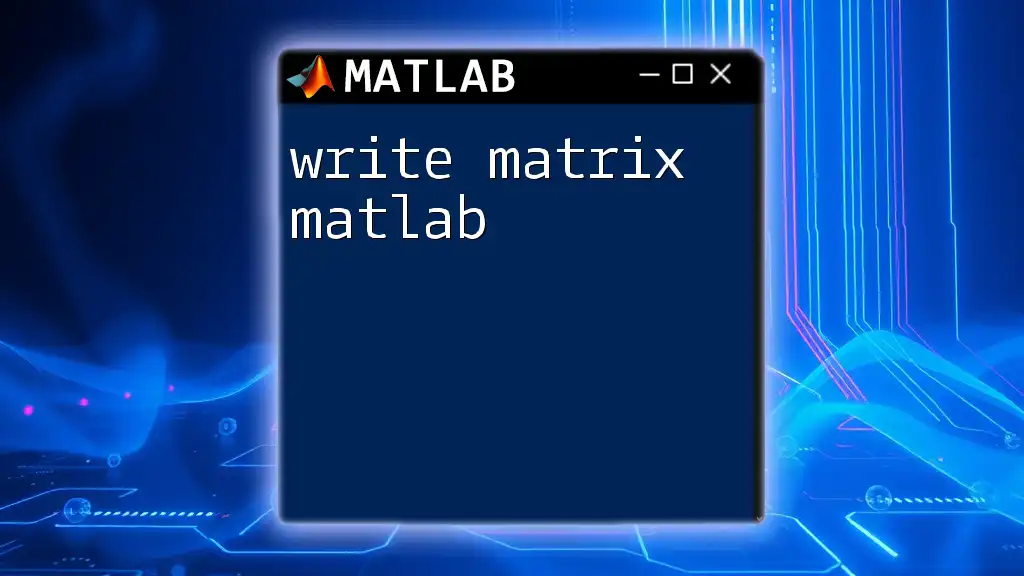
Accessing and Modifying Matrix Elements
Indexing in MATLAB
Accessing specific elements in a matrix is simple using indices. The format for indexing is `matrix(row, column)`. For example, consider the following code:
element = A(2,3); % Accesses the element at row 2, column 3
In this case, `element` would hold the value `6`, which is found at the second row and third column of matrix A.
Modifying Matrix Elements
You can easily modify specific elements using the same indexing method. For instance:
A(1,2) = 10; % Changes the element in row 1, column 2 to 10
After executing this, the first row and second column element of matrix A will now be `10`.

Performing Basic Operations with Matrices
Addition and Subtraction
Matrices of the same size can be added or subtracted element-wise. In MATLAB, the syntax is straightforward:
B = [1 1 1; 1 1 1; 1 1 1];
C = A + B; % Matrix addition
D = A - B; % Matrix subtraction
Both C and D will also be matrices of the same dimensions as A and B.
Multiplication
Understanding the two types of multiplication is crucial:
- Element-wise Multiplication: This involves multiplying corresponding elements in two matrices of the same size.
E = A .* B; % Element-wise multiplication
- Matrix Multiplication: This requires that the number of columns in the first matrix equals the number of rows in the second.
F = A * B; % Matrix multiplication (where dimensions allow)
For instance, if A is a 3x3 matrix and B is also established to be 3x3, then F would also be a 3x3 matrix.
Transpose of a Matrix
The transpose operation flips a matrix over its diagonal, transforming rows into columns and vice versa. Its syntax is simple:
G = A'; % Transpose of matrix A
This operation is particularly useful in various mathematical and engineering applications.

Essential Functions for Matrix Operations
Several common MATLAB functions facilitate matrix operations, enhancing efficiency and ease of coding.
Common MATLAB Functions
-
`size()`: This function retrieves the dimensions (number of rows and columns) of a matrix.
mat_size = size(A); % Returns size of matrix A -
`length()`: This function gives the length of the largest dimension, especially useful for vectors.
vec_length = length([1; 2; 3; 4]); % Returns 4 for a 4x1 column vector -
`sum()`: This function can sum elements across specified dimensions.
mat_sum = sum(A, 1); % Sums each column of A to return a row vector -
`mean()`: It calculates the mean value of the elements, which can be specified across rows or columns.
mat_mean = mean(A); % Returns the mean of each column in A
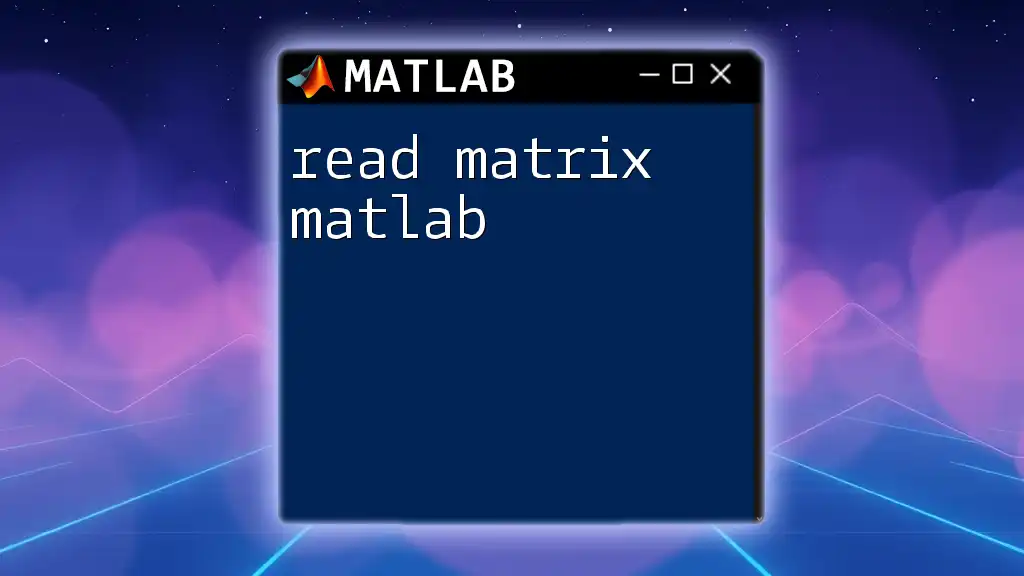
Practical Applications of Matrices
Data Representation
Matrices are a fundamental structure for organizing data in various fields like statistics, physics, engineering, and more. They facilitate computations, transformations, and data manipulations essential for analytical tasks.
Image Processing
In the realm of image processing, matrices are indispensable since images can be represented as multi-dimensional arrays. Each pixel in an image corresponds to a matrix element, allowing for various operations like filtering, transformation, and compression.
Solving Systems of Equations
Matrices play a crucial role in solving systems of linear equations, where various methods such as matrix inversion and Gaussian elimination utilize matrix operations to find solutions.
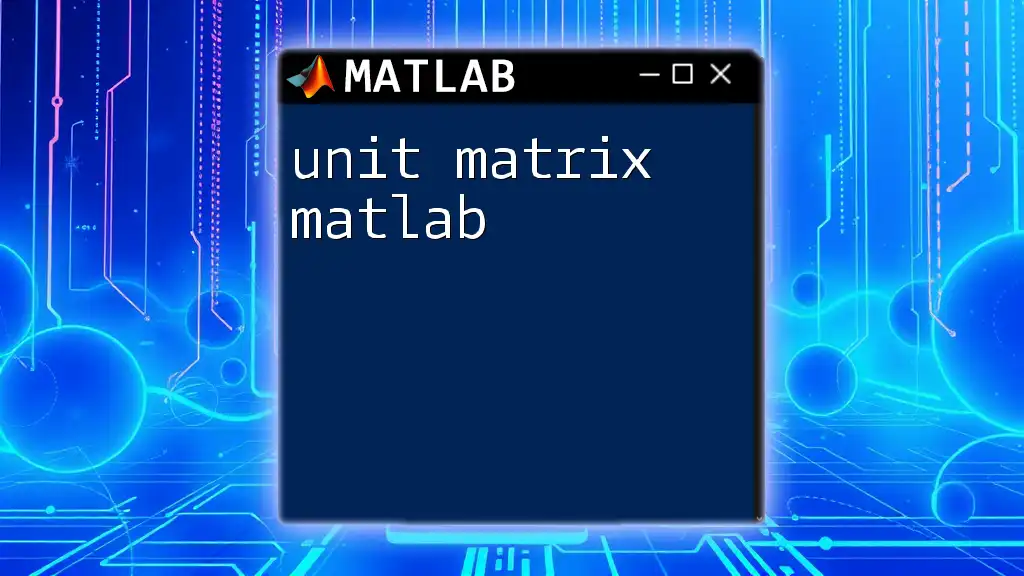
Conclusion
In summary, understanding how to define a matrix in MATLAB is foundational for engaging with more complex programming and mathematical tasks. Mastering definitions, operations, and manipulations of matrices will significantly enhance your efficiency and capability in MATLAB. We encourage you to practice these concepts by creating and manipulating matrices on your own!
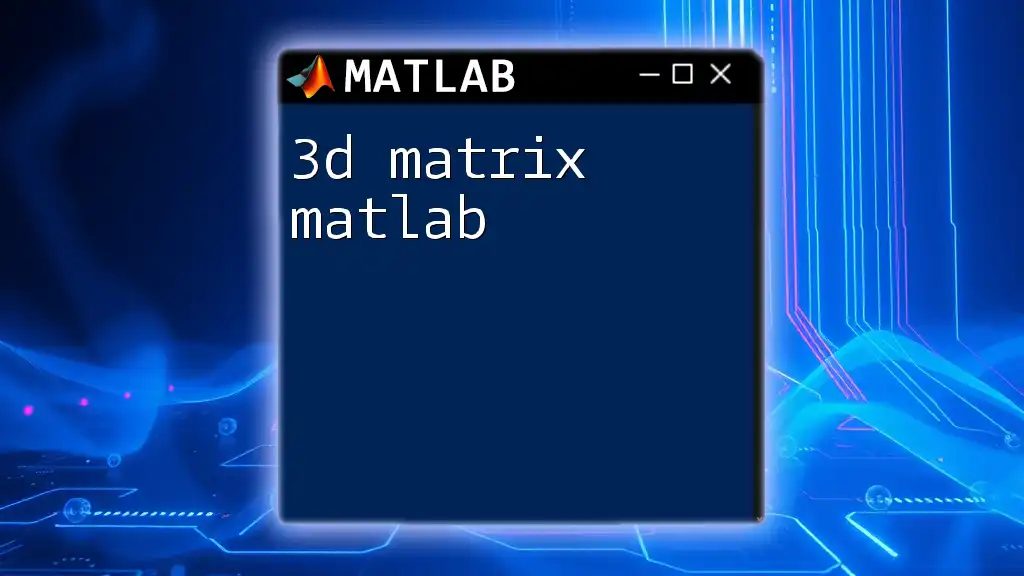
Additional Resources
As you continue your MATLAB journey, explore online resources, forums, and documentation for deeper insights and advanced strategies. Also, consider investigating more complex matrix operations and their applications, which can enrich your programming skill set.
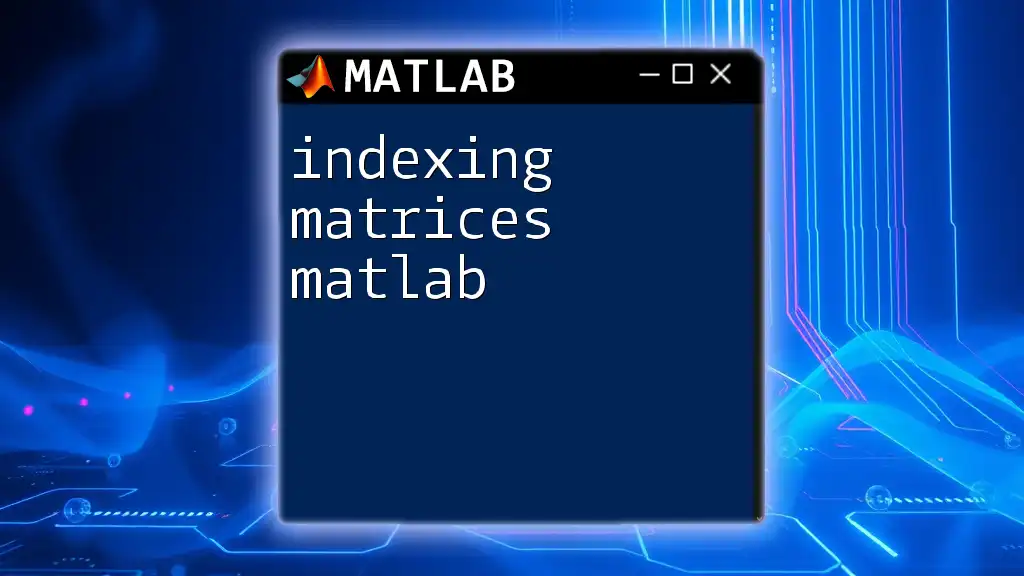
Call to Action
We invite you to experiment with defining matrices in MATLAB, observe how they function, and share any experiences or queries in the comments! Your journey into matrix operations is an exciting step toward mastery in MATLAB programming.

